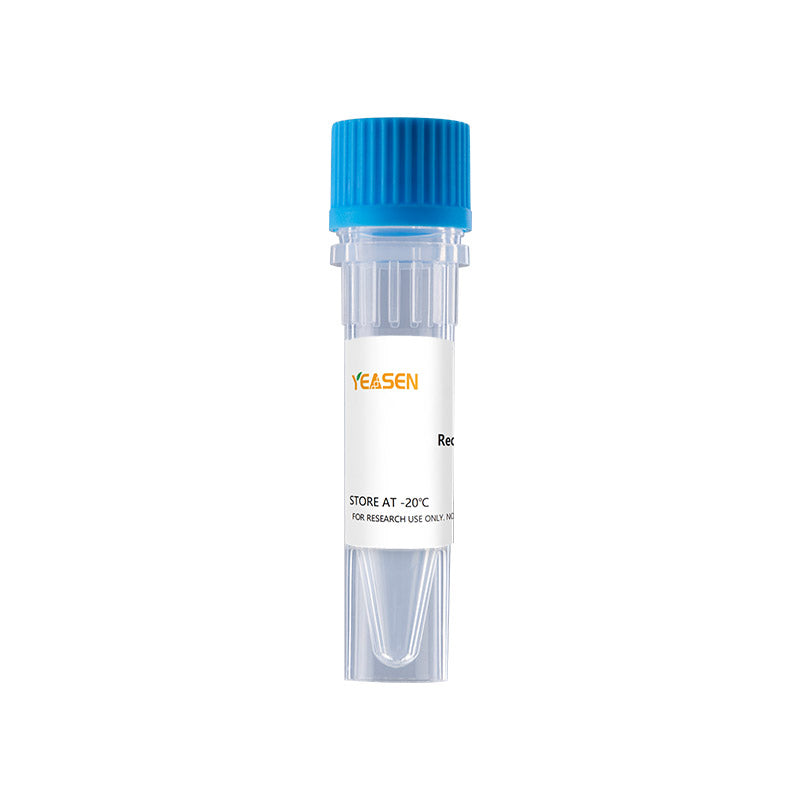Description
Vascular endothelial growth factor C (VEGF-C) and VEGF-D constitute a subfamily of the angiogenic VEGF angiogenic factors. VEGF-C is synthesized as a 58 kDa molecule that consists of a VEGF homolgy domain (VHD) flanked by N- and C-terminal propeptides. The proprotein undergoes covalent homodimerization and stepwise proteolytic processing to generate ligands with increasing affinity for VEGF R3/Flt-4. Fully processed VEGF-C containing just the 21 kDa VHD can additionally bind and activate VEGF R2/KDR/Flk-1. Fully processed human VEGF-C shares 98% amino acid sequence identity with mouse and rat VEGF-C. VEGF-C interactions with VEGF R3 are critical for lymphangiogenesis. VEGF-C and VEGF R3 are usually co-expressed at sites with lymphatic vessel sprouting, in the embryo, and in various pathological conditions. Over-expression of VEGF-C in tumor cells induces tumoral lymphatic hyperplasia, resulting in enhanced lymph flow and metastasis to regional lymph nodes.
Product Properties
|
Synonyms |
Flt4 ligand; Flt4-L; vascular endothelial growth factor C; Vascular endothelial growth factor-related protein; VEGFC; VEGF-C; VRPFLT4 ligand DHM |
|
Accession |
P49767 |
|
Source |
HEK293 Cells-derived human VEGF-C, Thr103-Arg227 with a C-terminal polyhistidine tag. |
|
Molecular Weight |
The recombinant mature form of human VEGFC consists of 136 amino acids and has a predicted molecular mass of 15.5 kDa. In SDS-PAGE under reducing conditions, it migrates with an apparent molecular mass of 22.5 kDa due to glycosylation. |
|
Tag |
His |
|
Physical Appearance |
Sterile Filtered White lyophilized (freeze-dried) powder. |
|
Purity |
> 95% by SDS-PAGE. |
|
Biological Activity |
1. Measured by its binding ability in a functional ELISA. Immobilized VEGF C-his at2μg/mL(100 μL/well) can bind VEGFR3 hFc, the EC50 of VEGFR3 hFc is 2-15 ng/mL. |
|
Endotoxin |
< 1.0 EU per 1μg of the protein by the LAL method. |
|
Formulation |
Lyophilized from a 0.2 μm filtered concentrated solution in PBS, pH 7.4. Normally 5% - 8% trehalose, mannitol and 0.01% Tween80 are added as protectants before lyophilization. |
|
Reconstitution |
We recommend that this vial be briefly centrifuged prior to opening to bring the contents to the bottom. Reconstitute in sterile distilled water to a concentration of 0.1-1.0 mg/mL. Stock solutions should be apportioned into working aliquots and stored at ≤ -20°C. Further dilutions should be made in appropriate buffered solutions. |
Shipping and Storage
The products are shipped with ice pack and can be stored at -20 ℃ for 1 year.
1 month, 2 to 8 °C under sterile conditions after reconstitution.
3 months, -20 °C under sterile conditions after reconstitution.
Recommend to aliquot the protein into smaller quantities when first used and avoid repeated freeze-thaw cycles.
Cautions
- Avoid repeated freeze-thaw cycles.
- For your safety and health, please wear lab coats and disposable gloves for operation.
- For research use only.
Payment & Security
Your payment information is processed securely. We do not store credit card details nor have access to your credit card information.
Inquiry
You may also like
FAQ
The product is for research purposes only and is not intended for therapeutic or diagnostic use in humans or animals. Products and content are protected by patents, trademarks, and copyrights owned by Yeasen Biotechnology. Trademark symbols indicate the country of origin, not necessarily registration in all regions.
Certain applications may require additional third-party intellectual property rights.
Yeasen is dedicated to ethical science, believing our research should address critical questions while ensuring safety and ethical standards.

